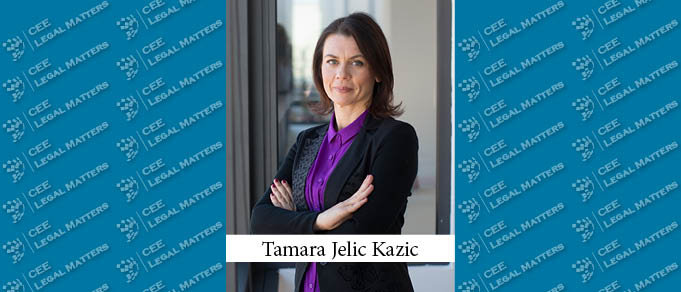Following three rounds of changes to Croatia’s tax system in recent years to ease business and reduce the overall tax burden, the Government announced plans to further relax the tax system in 2021.
The plan is to further reduce the corporate profit tax rate from 12% to 10% for small and medium-sized taxpayers earning revenues of up to approximately EUR 1 million. The effects of this change should materialize almost immediately based on reduced tax advance payments. Withholding tax on dividends would also be reduced from 12% to 10%.
The plan is to increase the threshold for VAT taxation procedure based on collected fees from approximately EUR 1 million to EUR 2 million of taxable supplies. An expansion of “the calculation method” for import VAT has also been announced. This means that entrepreneurs would not need to engage funds to pay VAT on imports but would calculate import VAT liability and deduct it as input VAT in the same VAT return.
The goal for personal taxation is to further relieve taxpayers by reducing tax rates from 36% to 30% for annual income, from 24% to 20% for final income, and from 12% to 10% for a flat-rate taxation of activities. This would directly affect the increase in disposable income.
Although the announced legislative changes are expected to help Croatia become a more competitive market, in practice we see that the Tax Authorities continues to rigidly interpret tax rules.
Recently, the tax administration has issued several opinions relating to the treatment of different types of work/income. They argue that any income earned for the work with elements of the employment relationship should be treated as “employment income” (instead of self-employment income or other income) and subject to progressive taxation. Otherwise, the natural person performing such work will be liable for personal income tax on employment income and the company who engaged the person will be liable as tax guarantor.
The elements of the employment relationship are set out in the Personal Income Tax Bylaw. For example, the following criteria imply employment: (a) control of activities (including time/place of work, work instructions, providing equipment, and training); (b) financial control (including reimbursing business/travel expenses, regular/monthly payment of a similar amount) and (c) relations between the parties (including compensating annual leave, providing sick pay or similar, and market conditions for engaging a person for a particular assignment).
While the aim to eliminate unjustified attempts to use tax benefits seem reasonable, it is questionable whether there are legal grounds for the tax administration to generally apply these rules to directors/management of a company.
In some opinions, the tax administration has argued that directors (board members) and managers of a company who are not employed by the company should, nonetheless, be taxed as employees of the company, even where these is no signed employment agreement and despite the fact that the person is registered as self-employed (or employed in his own company). This is explained as follows: the management represents the company and manages the business of the company, but within the limitations set in the regulations, the statute of the company, and decisions of the supervisory board and the general assembly. The management is also obliged to regularly report to the supervisory board. Consequently, the tax administration concludes that only in exceptional conditions can management income not be treated as employment income.
Only if the director is an independent entrepreneur or a business partner of the company will his income be taxed as self-employed income. However, the responsibilities for management of the company described above exclude independent entrepreneur status.
In addition, the tax administration argued that management positions also include other elements of an employment relationship: management is physically or otherwise present at work, they are informed of the company’s activities, and they perform management activity on a permanent basis. Control of activities is reflected in the relationship between the management and the supervisory board of the company.
The tax administration concludes that there may be exceptional situations in management activities do not qualify as an employment relationship. This, however, should be considered on a case by case basis
It remains to be seen how this recent interpretation of the management income tax treatment will be accepted/applied in practice.
By Tamara Jelic Kazic, Partner, CMS Zagreb
This Article was originally published in Issue 7.9 of the CEE Legal Matters Magazine. If you would like to receive a hard copy of the magazine, you can subscribe here.
